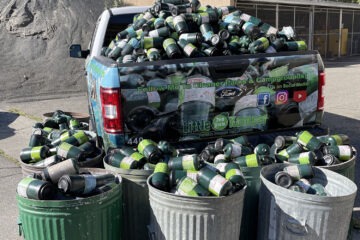Reflections from a Conservancy staff member on her first PIT party.
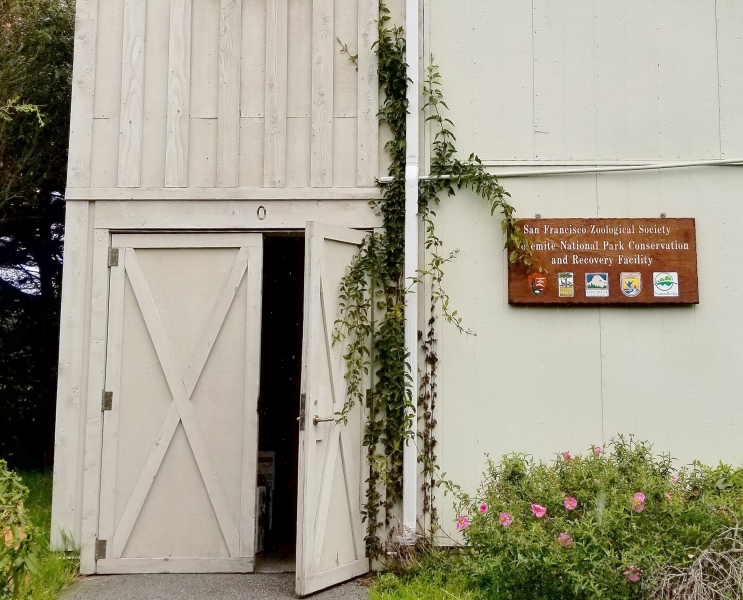 No, not a pity party … a PIT (Passive Integrated Transponder) party!
No, not a pity party … a PIT (Passive Integrated Transponder) party!
First, a little background: For several years, our donors have been supporting efforts to restore Yosemite’s population of California red-legged frogs, whose numbers plummeted in the 1900s. As part of that work, a San Francisco Zoo building once used for rearing bald eagles was transformed into a special facility for “head-starting” vulnerable amphibians and reptiles, to give them the best chance of survival in the wild. In March, I took a drizzly bike ride down to the zoo to check out the site and meet some of the people working behind the scenes to turn the tide for struggling aquatic species.
Along the path to the conservation facility, hidden birds squawked overhead, and a flash of white caught my eye — a pale, speckled penguin, waddling in a nearby enclosure. “Oh, that’s Freckles,” the zoologist walking next to me said.
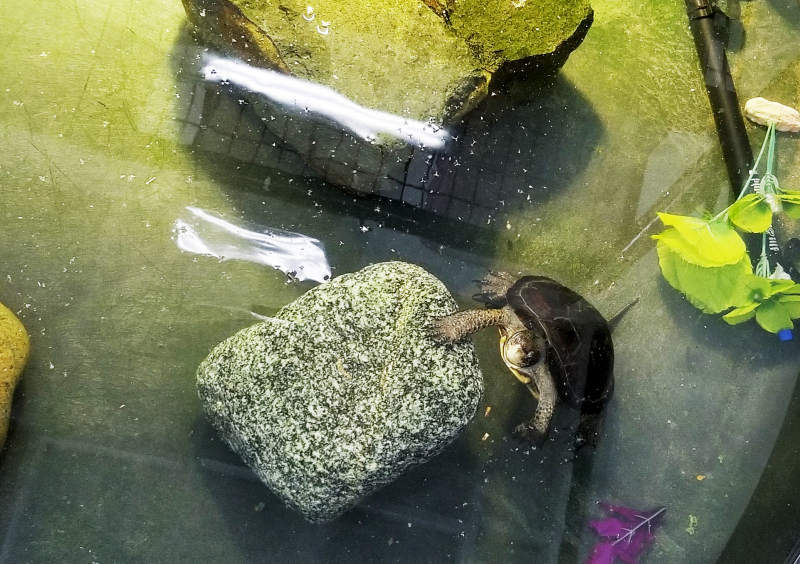 We ducked into a high-ceilinged room, where western pond turtles (another species making a comeback in the park, thanks to donors’ support) were swimming in large pools. Most of the turtles ducked under logs when I peered into the water, but one swam toward the surface and poked its head out. We had a brief staring contest. I lost.
We ducked into a high-ceilinged room, where western pond turtles (another species making a comeback in the park, thanks to donors’ support) were swimming in large pools. Most of the turtles ducked under logs when I peered into the water, but one swam toward the surface and poked its head out. We had a brief staring contest. I lost.
From there, we headed over to the frogs, our focus for the day. Once common in Yosemite, California red-legged frogs were extirpated from 70 percent of their range, due to habitat loss, invasive species, and other factors. But in this protected place at the south end of San Francisco, they seem to be thriving. On the day of my visit, hundreds of frogs were hopping around in carefully crafted habitats (“habs,” for short) featuring a mixture of terrestrial and aquatic terrain. The room temperature was carefully controlled, kept in the mid-50s to help the frogs acclimate to early spring conditions in their future home: Yosemite Valley. I kept my jacket on.
Before long, a pair of Yosemite-based biologists, Rob and Colleen, joined us. Rob has been spearheading amphibian restoration projects in Yosemite for years, including the ongoing red-legged frog work. On this particular occasion, he and the team were focusing on frogs reared from eggs that were collected from a donor site in 2016.
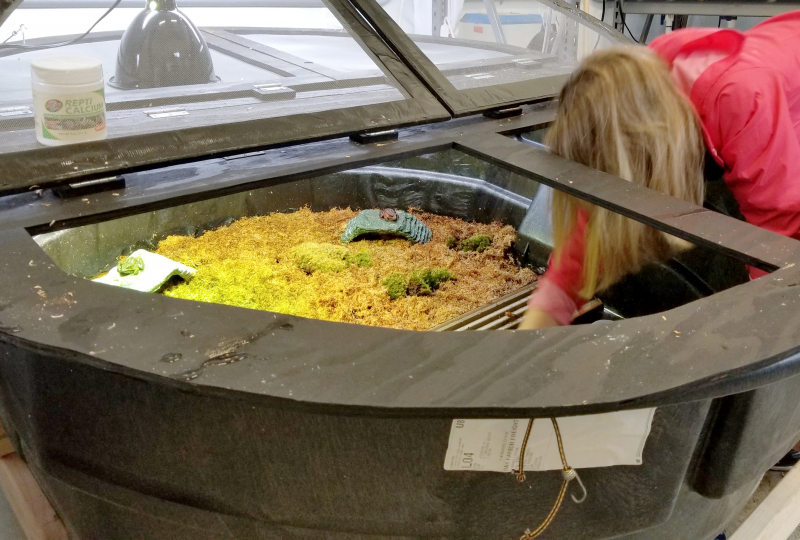 The team opened the hinged lids on the habs and started transferring frogs into plastic tubs. “1, 2, 3, 4 — wait, okay, yes that was 4 — 5, 6…” Fourteen frogs, then on to the next container. After several rounds of collecting and counting, the habitat looked deserted … but there were still 14 missing. I was skeptical, but as the team gently combed through the moss, they eventually found every straggler. Perseverance pays off.
The team opened the hinged lids on the habs and started transferring frogs into plastic tubs. “1, 2, 3, 4 — wait, okay, yes that was 4 — 5, 6…” Fourteen frogs, then on to the next container. After several rounds of collecting and counting, the habitat looked deserted … but there were still 14 missing. I was skeptical, but as the team gently combed through the moss, they eventually found every straggler. Perseverance pays off.
Next stop: the zoo’s veterinary hospital. Party time!
It wasn’t a typical party setting, but then again, any day that starts with a penguin sighting isn’t a typical day (for me, at least). Atypical party supplies, too: dropcloth, sterilized tools, buckets of clean water, scale, spreadsheets. Scrub-wearing vets dashed in and out, gathering gear for a surgery next door.
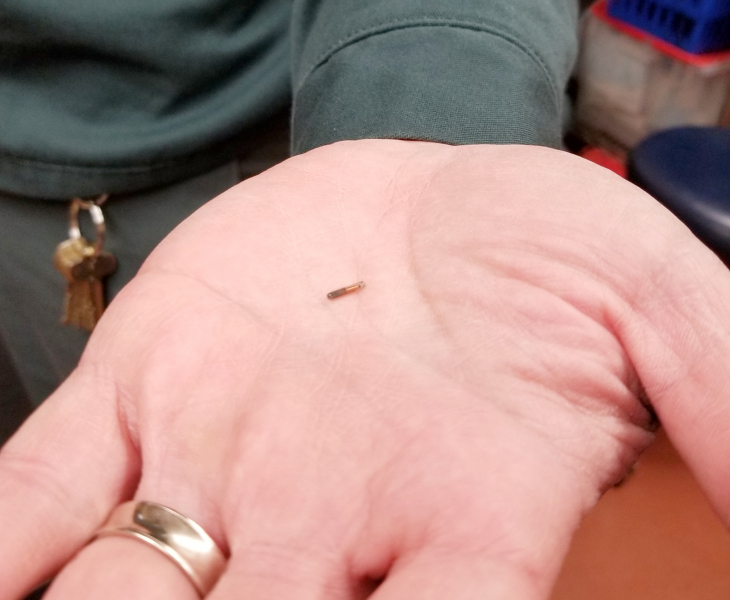 The team pulled on gloves and got to work. Their goal: microchipping the frogs with PIT tags before the animals’ impending release in the Valley. (The passive electronic tags do not actively record or transmit data; they are only activated when read by a scanning device.)
The team pulled on gloves and got to work. Their goal: microchipping the frogs with PIT tags before the animals’ impending release in the Valley. (The passive electronic tags do not actively record or transmit data; they are only activated when read by a scanning device.)
With thousands of PIT-tagging experiences under their collective belts, the team made the work look easy. It’s not. Imagine trying to hold a small balloon partially filled with pudding. Now imagine that said balloon has strong, slippery appendages. That’s about what holding a frog is like.
Rob shared his PIT party tricks with me: Use a careful but firm grip. Wrap your fingers around the hips. Try to figure out the sex. If a frog has “Popeye arms” and nuptial pads (bumps on the thumbs), or makes a grunting or growling sound, it’s probably a male. Record any interesting attributes — birthmarks, exceptionally red coloring, bright yellow splotches.
Next, use a caliper to measure the frog, nose to rear (most are only a couple inches long). Once the measurement is jotted down, clean the frog’s back. Use steady hands (and tiny tweezers) to slide a minuscule PIT tag (about the shape and size of a grain of rice) under the skin.
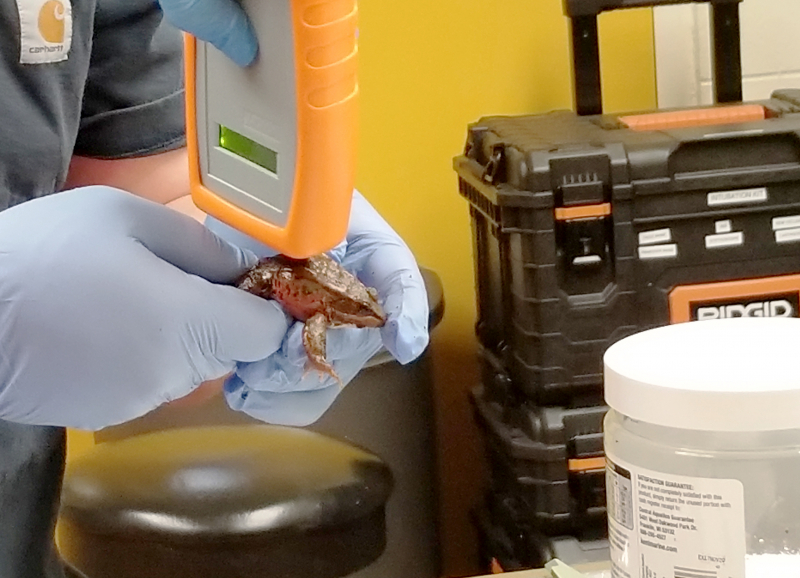 As a final step, weigh the microchipped frog, and scan it to confirm the number of the PIT tag. After the frogs are released in the Valley, Rob and his team will be able to use a scanning device to check on the 2016 group and see how they’re faring in their new outdoor home.
As a final step, weigh the microchipped frog, and scan it to confirm the number of the PIT tag. After the frogs are released in the Valley, Rob and his team will be able to use a scanning device to check on the 2016 group and see how they’re faring in their new outdoor home.
Within a couple of hours, the team had completed more than 80 tags. We carried the newly tagged frogs back to their habitats, where fresh moss awaited.
I headed back out into the fog, back past Freckles and the unseen squawking birds. As I pedaled to the office, the white-capped Pacific churning to the west, I pondered the rough odds facing red-legged frogs. Of thousands of eggs, maybe one or two make it to adulthood. Rearing frogs at the zoo helps boost their chances of survival, but they’re still not in the clear. Once in the wild, those frogs will confront the challenges that any animals do, like predation, drought and disease.
That said, preliminary observations of the red-legged frogs released last year, including results from visual surveys, environmental DNA and PIT tags, offer cause for (cautious) celebration: The newly released frogs were doing well, gaining weight and expanding their habitat range.
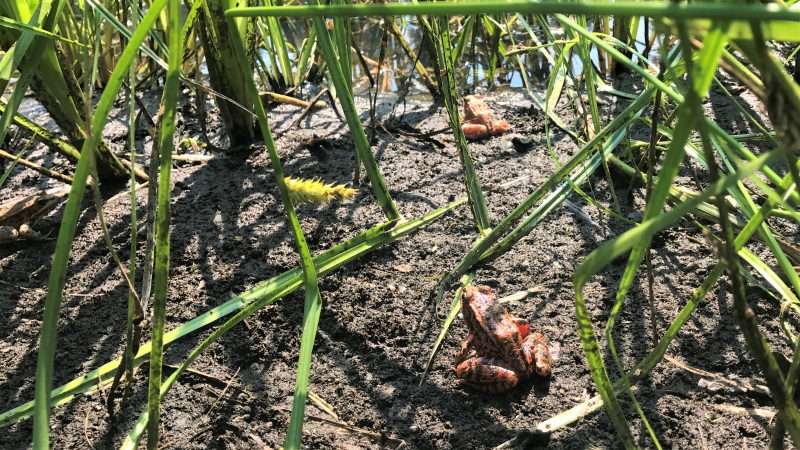
With your support, the park is restoring wetlands that could support red-legged frogs (and other water-loving creatures) in the future. Meanwhile, Rob and his team are continuing to focus on ensuring the long-term survival of the newly growing frog population in Valley, using techniques that could help save species elsewhere. And that’s worth a party.


